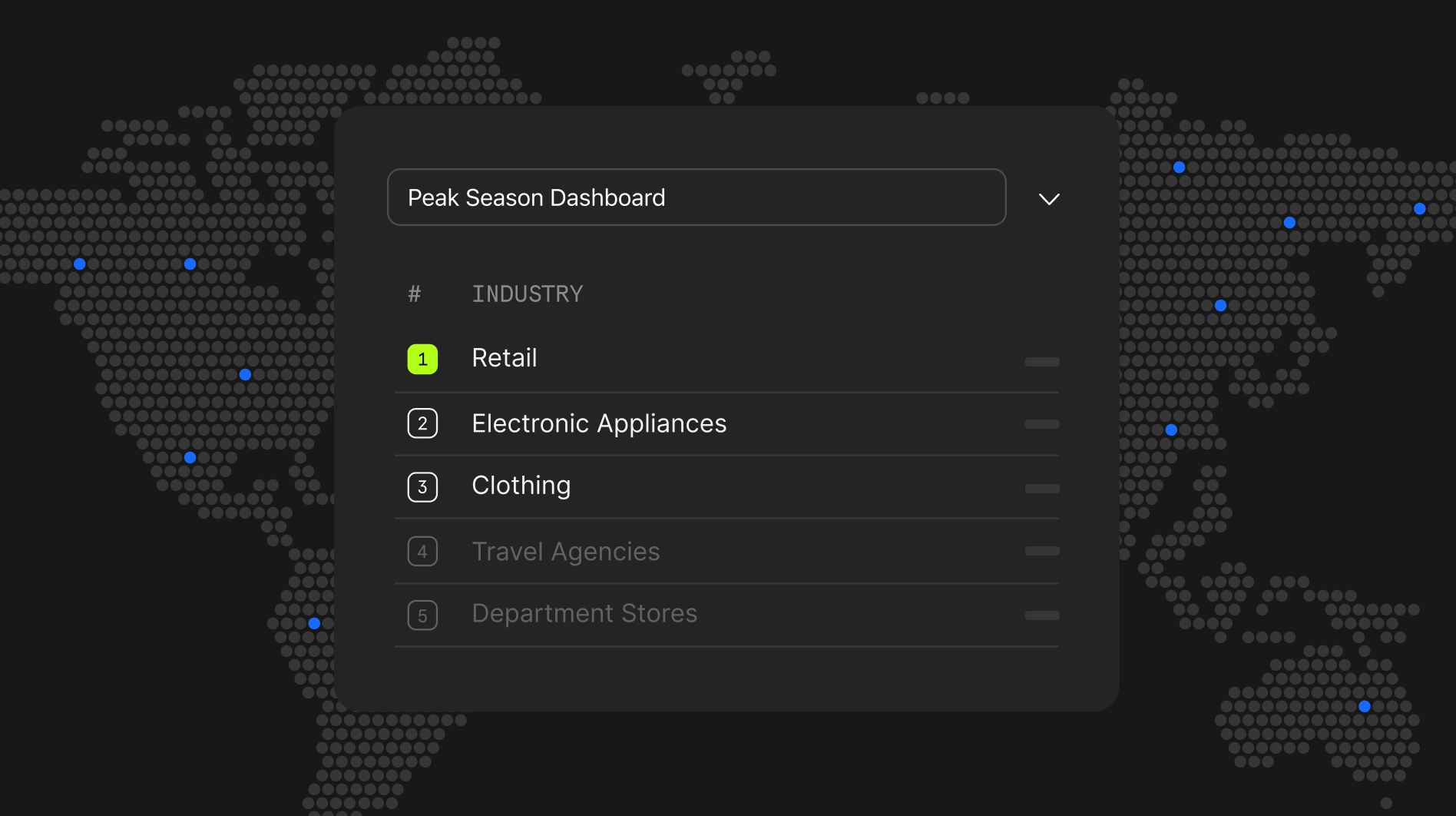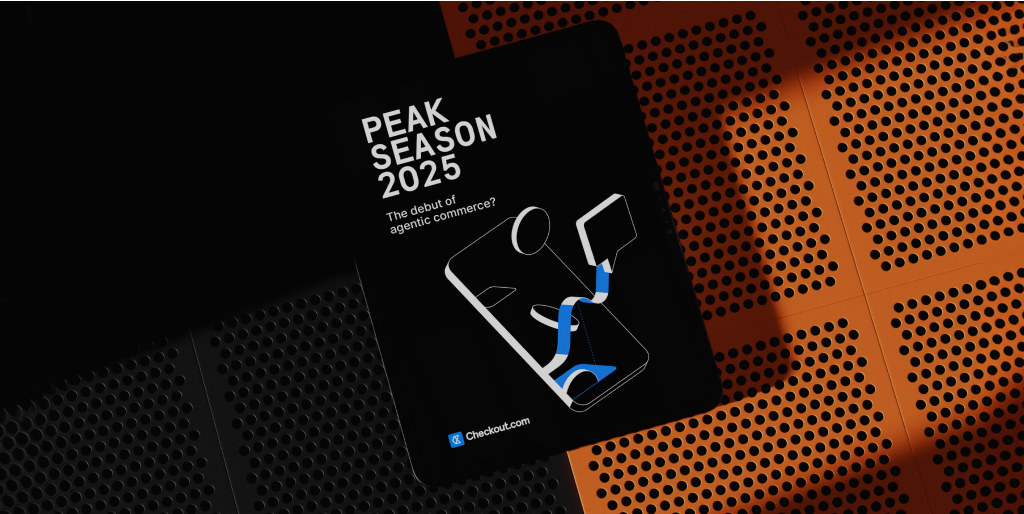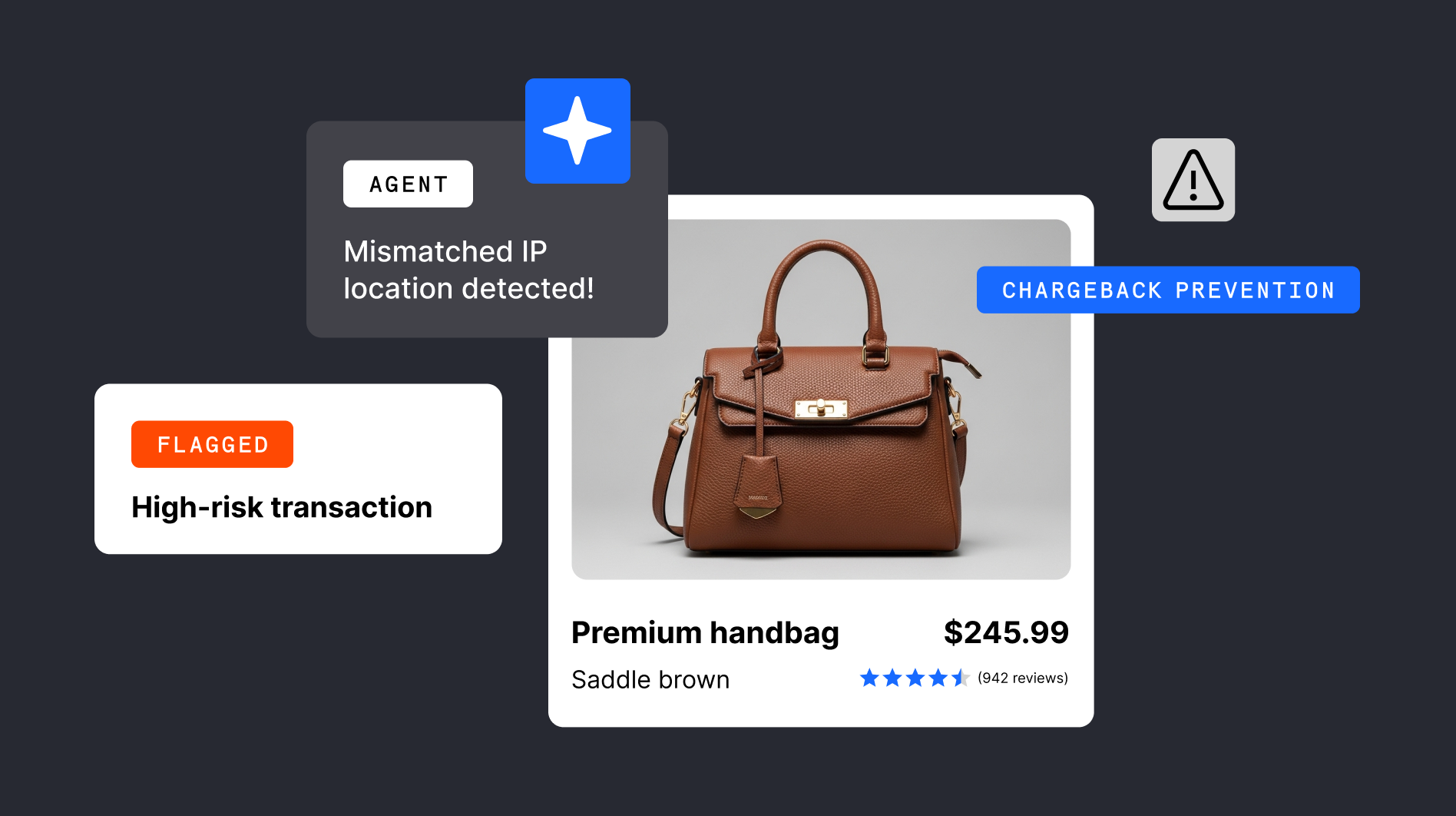For retail businesses, the checkout experience can make or break a sale. A smooth and efficient payments process keeps your customers satisfied, reduces cart abandonment, and ultimately drives revenue. But payments performance is more than just speedy transactions – it’s about optimizing acceptance rates, minimizing fraud, offering the right payment methods to your customers, and more.
In this guide, I’ll cover key strategies to enhance your payments performance, including fraud prevention, payment method selection, and the vital role of local acquiring in boosting acceptance rates.

How to optimize your online retail payment processing strategy
A strong retail payments strategy is about a combination of security, efficiency, and customer experience. What it primarily comes down to is acceptance rate and authorization rate – if you can keep both of those high and your fraud rate low, you’re on the right track. And your customers will have the smooth journey they expect.
According to consumers surveyed for our Trust in the Digital Economy 2025 report, payment performance means security, speed, and the option to pay using the right payment method and currency.
Payment service providers (PSPs) like Checkout.com use cutting-edge technology, deep payments expertise, and regional know-how to support businesses through their growth. We understand the unique payments needs of retailers and offer flexible solutions with a proactive partnership approach, boosting payments performance at every stage of the journey.
As a retail business, you’ll likely have very specific needs and high demands. Your partners need to perform at the standard you set for yourself. Responsiveness and proactivity are key values in a partner.
Balancing fraud protection and authorization rates
As a retailer, few things are more important in your payments setup than striking the right balance between preventing chargebacks and refund abuse while reducing friction. It’s the epitome of strong retail payment processing.
The challenge is: how do you achieve this balance when pursuing high authorization rates can be to the detriment of fraud protection, and vice versa? Luckily, that’s exactly what PSPs are experts at – and we’re here to tell you all about it.
You need to clarify that the sales coming in are legitimate and that there’s no refund fraud happening on those goods. Doing this requires looking at the end-to-end journey, from payments to refunds, as opposed to segmenting your approach. With a holistic overview, you can better understand what happens within the payments process, helping you take more tangible actions to mitigate fraud on the back end without impacting the customer journey on the front end.
When your fraud protection is too strict, it can send legitimate customers through an additional authentication layer, which can lead to cart abandonment or increase the number of blocks that lead to failed payments. Neither is good for your business; 42% of consumers won’t return after a failed payment.
At the same time, security measures also help your customers know they can trust you. Our data shows that 40% of consumers have abandoned cart due to security concerns.
The most common types of online retail fraud
- Account takeovers and phishing – When scammers gain access to customers' accounts using stolen credentials, often obtained via data breaches, manipulation, or phishing links
- Friendly fraud – Chargebacks initiated by customers who claim they didn’t authorize a purchase but still keep the goods or return fake items. It’s taken on its name because it’s often unintentional, for example if the customer forgets the transaction or doesn’t recognize the business name
- Credit card fraud – The unauthorized use of stolen card details, including card-testing schemes where small transactions are made to validate card details before attempting larger transactions
- Discount abuse and loyalty fraud – Customers exploiting promo codes, rewards, or vouchers unfairly, for example sharing discounts
- Refund fraud – Manipulating the refund process to claim illegitimate refunds
Data from the Merchant Risk Council shows “friendly fraud” and refund abuse top the list of fraud experienced by businesses in the past 12 months. To protect your business from these fraud types, implement transparent policies and detailed transaction descriptors to help set clear expectations and prevent disputes.
Fraud detection and protection
The sophistication of fraud techniques has advanced with the evolution of the digital world. Your fraud screening needs to be able to keep up. It must get the decision right to block the bad actors and not let the floodgates open to fraud, without delivering false declines (blocking legitimate transactions) – which can cause low acceptance rates.
One thing to note is that if you’re not seeing any fraud at all, it could mean your fraud rules are too tight. It’s healthy to see a small amount trickling through so that you know this isn’t the case. Leverage the data you receive at each stage of the journey – such as 3D Secure, authorization, and refund and chargeback ratios – and feed that data back into the loop to make more informed decisions, instead of looking at different parts of the journey in a silo. It’s helpful to have a holistic overview.
Choosing the right fraud detection and prevention tools
When it comes to fraud detection and prevention tools, the things you should look out for are:
- Machine learning and AI – Identifies fraudulent patterns and adapts to new threats
- Dynamic fraud rules – Adjusts risk strategies based on real-time data to prevent false declines while catching fraudsters
- Granular data access – Provides insights to optimize risk management
Checkout.com’s Fraud Detection Pro protects your business from fraud while minimizing false declines. Machine learning, trained on data from our network of the world’s biggest brands, helps your business keep up with rising fraud sophistication levels, get accurate risk scoring, and access granular data to optimize your risk strategy. Flexible rules and approve and deny lists mean you can easily block fraud, approve legitimate transactions, and build various risk strategies that adapt to your business goals.
While the foundations of any solid fraud detection tool, like machine learning and artificial intelligence, are essential, dynamism is the unsung hero. Fraud can significantly impact your business’s net revenue, so you need the flexibility to challenge it head-on. False declines can eat into your bottom line, and the less dynamic your fraud detection is, the more false declines your customers are likely to experience.
Access to data is also not to be overlooked; it will help you understand where and why payments are failing and learn how to get it right.
SCA compliance for European businesses
The Strong Customer Authentication (SCA) mandate, which came into effect in 2019, requires two-factor authentication for many transactions, adding an extra layer of security but also friction to the customer journey.
Since the introduction of this legislation, businesses have been finding ways to reduce friction for their customers with a fraud and chargeback-free transaction history by using transaction risk analysis (TRA) or low-value exemptions.
What are exemptions? Exemptions shift liability from the card issuer to the business, allowing merchants to signal their trust in a transaction and request authorization without additional friction.
Exemptions help trusted customers bypass extra authentication steps like 3D Secure to avoid interrupting the payment flow and potential transaction failures. You should take a dynamic approach and only apply 3DS to high-risk transactions, using exemptions for the low-risk ones. This means legitimate customers will never be blocked from making legitimate transactions.
In addition to exemptions, VIP lists can be used to bypass 3DS. They streamline the approval process for trusted customers, enhancing their experience while maintaining security. These lists must be continually verified to avoid exploitation by fraudsters.
It’s important to look at alternative payment methods (APMs) too, which will have different pros and cons. The most prominent ones for retail businesses in Europe are digital wallets like Apple Pay and Google Pay. These APMs allow you to bypass 3DS, so it’s a win-win – your customers get frictionless checkout and quick authentication, but your business still gets the liability shift and protection. Apple Pay and Google Pay are essential for retailers looking to optimize their acceptance rate in Europe.
Additional verification methods
There are a wide range of other verification tools that can be used to detect and prevent fraud, such as:
- Address verification services (AVS) – Compares the billing address provided by a customer during a transaction with the address on file with the card issuer. If the addresses match, the transaction is more likely to be legitimate
- Card verification value (CVV) check – Verifies that the cardholder possesses the payment card by requiring them to enter the CVV code. The card issuer validates the code, but it’s never stored by the merchant
- Biometric identification – Uses a consumer’s unique physical or behavioral traits to verify their identity, e.g. fingerprint, facial, or voice recognition. They’re often integrated with digital wallets and comply with SCA requirements

Network Tokens
Network Tokens replace sensitive card details with secure digital tokens, reducing fraud risks and false declines.
How do network tokens work?
- Private data, like payment account numbers (PAN), are replaced with a sequence of random numbers called a token
- The tokens are generated by card schemes and recognized by issuers
- Tokens are generated when a cardholder enters their credit card details online so that their private data won’t be passed through numerous systems
- The private data is stored in secure vaults

Note: Network tokens provide issuers with greater visibility over transactions, therefore instilling more confidence in approving them and reducing false declines.
Authentication steps, such as 3DS, are generally reduced with network tokens because there are lower SCA requirements. Tokenization satisfies PCI DSS compliance requirements which aim to reduce the use and storage of sensitive data and govern how this is done safely, because it stops the sensitive data from reaching a business’s systems.
By protecting your customers’ details via tokenization, you’re also protecting against common types of retail fraud like account takeovers and data breaches. Criminals commonly attempt to hack into ecommerce systems to obtain customer card details. Although fraudsters can do a lot with stolen card data, they can’t do anything with a token.
So, protecting your customers also protects your business financially. The global average cost of a data breach for retail businesses in 2024 was $3.48 million according to IBM’s Cost of a Data Breach 2024 report. That’s a hefty price to pay, and IBM identified lost customers as one of the main cost contributors. Operational downtime, customer service, and regulatory fines were also listed.
Local acquiring, payment methods, and localization
If you do your retail payment processing through a local acquirer, rather than cross-border acquiring, you can save on interchange fees and improve authorization rates. Cross-border transactions are significantly more expensive than domestic transactions.
In most cases, you need a legal entity set up in a country to access local acquiring. However, if you’re based in Europe, you only need one legal entity in the European Economic Area (EEA) to access direct acquiring in all EEA member countries.
Since Brexit, there’s been a change in the fee structure for what counts as intra-regional interchange fees. Transactions coming from Europe into the UK, which is no longer a member of the EEA, are often subject to cross-border fees. This increases the costs and hurts the UK-based businesses that don’t have a legal entity in the EEA or those that aren’t leveraging it for local acquiring. Make sure you’re routing your European payments through a European legal entity, if you have one, to avoid the extra costs.
At Checkout.com, we work with our merchants to optimize how they process payments, ensuring they route European transactions through their local entity. This significantly reduces the interchange fees to the intra-EEA rate, which is almost identical to domestic processing fees.
However, local acquiring doesn’t just benefit your costs; your performance will improve too. When issuers see a transaction from a cardholder in a country that’s not where they typically shop, it raises more red flags. Issuers therefore often put a block in place, negatively impacting your performance. The cardholder doesn’t have to be physically paying abroad for the red flag markers to go up. It could simply happen when a French customer makes a payment on your site and you process that payment in the UK, for example.
Choosing the right payment methods
While it’s important to offer a variety of payment methods, making sure they’re the right ones carries equal weight. Your customers should be able to pay in the way they want, which has increasingly diversified from traditional credit and debit cards. APMS like digital wallets and buy now pay later (BNPL) are on the rise – and giving your customers the option to use them to pay for your business’s goods can be a dealbreaker.
In retail, payment is one of the most important parts of the customer journey. No matter how much you invest in hooking the customer through great marketing and products, it's all for nothing if the customer fails at the last hurdle – payment. For example, if their payment is falsely declined or you don't offer the payment option they need.
The more of your customers’ favorite payment methods you accept, the higher your conversion rate will be. You’re giving them one less reason to abandon their purchase. One of the main reasons consumers use BNPL, for example, is convenience – to manage cash flow with split payments or hold off paying until after payday.
Although retail finance and payment installments aren’t new, the shift to online has made accessing credit far easier and given rise to a large number of BNPL providers. Many merchants see impressive uplifts in basket sizes and conversion rates due to offering BNPL as a payment method to customers.
“With high ticket items, we focus on improving payment option variety, prioritizing options that improve affordability. When we initially launched Tabby and Tamara in MENA to facilitate monthly payments, we realized that only displaying it at the last step of checkout doesn’t make sense. Payment methods like BNPL and installments need to be visible at the very beginning, on the product pages, with monthly prices. For us, checkout starts the moment you enter the site.” Shares Sabrina Würfel, Regional Director – Head of D2C eCommerce Group MENA, Samsung Electronics.
Localization
The ideal scenario is to have a payments setup so smooth that your customers never realize you’re based in another country. But how do you achieve this?
- Offer local payment methods at checkout. These will differ across markets, so make sure you’re clued up on the regional nuances to get the right mix of payment methods in each one. Customers should be able to pay how they want, wherever they are
- Reduce, or eliminate where possible, added cross-border costs for your customers, such as fluctuating FX rates, taxes, and high shipping costs. Using local warehousing solutions is a great way to reduce shipping costs and delivery timelines
- Use local acquiring to improve your acceptance rate and customer experience
- Allow customers to shop in their local currency

Customer experience
Consumer decisions are typically driven by convenience, so your business needs to offer it to them. There are multiple ways you can create a convenient customer experience:
- One-click checkout – Stores payment details for fast repeat purchases
- Instant payouts and refunds – Improves customer loyalty
- Simple payments page – Keep text and design minimal but clear and only request essential information
- Localized language, currency, and payment method options – Removes friction from cross-border sales

Flow is a clever bit of code from Checkout.com that lets you accept payments using customizable components through one simple integration. It will help you increase conversions with smart optimizations, responsive design, and a look and feel customized to fit your brand. With Flow, you can dynamically offer customers their preferred payment methods and language based on their location, currency, or device type. Adding new payment methods is easy – no coding needed.
“Many people interact with our live chat to ask questions about our products. We don’t want people to have to go to FAQs to understand delivery timelines. So we have a lot of AI-powered product recommendations and personalized pop-ups based on what device customers are coming from and what we already know about them based on previous site visits or device ownership – it’s very holistic.” Sabrina affirms.
Refunds and payouts
It’s easy to get stuck focusing on how your money comes in, but as retailers, how your money goes out is just as important. Consumers expect fast, hassle-free refunds and a smooth returns process increases brand loyalty. Loyal customers lead to increased revenue.
Customers will always make returns, so refunds will always be necessary – and setting up the best way to process them is essential. A negative experience may leave a customer dissatisfied, or worse – with a sour taste – and prevent them from shopping from your business again.
Quick payouts will also help your business operationally because you’re less likely to be inundated with impatient customer service queries.
Beware of fraud, particularly when it comes to the return of goods. Businesses weren’t tracking the process well enough for too long, but many top retailers have now realized that this is where a lot of manipulation and abuse occurs.
How trust in the digital economy affects retail
Our Trust in the Digital Economy 2025 report defines trust as an action: clicking “buy,” sharing your data, or booking a ride. Consumers are embedding digital commerce into every part of life, and shopping is right up there. This embedded behavior signals growing trust and raises the bar for performance.
Three-quarters (75%) of global consumers transact online weekly or more. And this shows no signs of slowing down – since 2022, daily online transactions have increased by 167% in the US and 300% in MENA. The Digital Economy is leading more consumers to trust online over in-store shopping experiences; over 45% of Gen Z shoppers compare prices on their phones while in-store.

Why is trust important in payments?
When consumers trust, they’ll convert. The point of payment is when this is most visible and valuable. A total of 66% of consumers say payments performance is the key driver of trust at checkout, overtaking returns policies, which were cited as more important in 2022.
Ecommerce customer acquisition costs range from $50 to $130, although they can stretch to over $1,000 in high-value verticals like jewelry. If you’re investing that heavily in customer acquisition, you need it to be worth it. But one failed payment can undo that investment in seconds. Poor payments performance damages more than just revenue, but reputation and loyalty too (a consequence of reduced trust).
When Alibaba’s Jack Ma launched Alipay in 2004, he was driven by the idea that “The bigger the trust problem, the greater the opportunity”. Alipay was the answer to the trust gap in ecommerce payments faced by Alibaba in the early 2000s, and now it’s a $120 billion business. As a retail business, what can you learn from this? Where there’s a lack of trust, building the right technology is the key to overcoming it.
Trust and AI in retail
Consumers are ramping up their use of AI for shopping. Interestingly, this amplifies human trust signals as algorithms use social proof, ratings, reviews, and user-generated content (UGC) to influence discovery. Now, brands must optimize for machine visibility based on the above filters. Reputation, responsiveness, and feedback all feed into how consumers – and AI – evaluate trustworthiness.
What causes consumers to lose retail trust at checkout?
The biggest threats to customer trust at checkout have changed significantly in recent years. Our data shows that in 2020, the top concern was the returns process: was it clear and hassle-free? That concern is no longer as prevalent today because return processes are more standardized and therefore trusted. Now, it’s the payment experience being scrutinized: shoppers want speed, security, clarity, and choice. Failed payments and security concerns kill trust.

“At the end of the day, it’s about meeting the customer where they are at, and providing choice at the moment of payment which will translate into more sales and a better customer experience.” Shares Andres Treviño, Zone Payments Management AVP at L’Oreal, in his My Path in Payments.
Maintaining trust in the Digital Economy
Consumers in 2025 expect speed, reliability, and invisibility. In many cases, they expect perfection. But in order for your business to offer this, you need to be operating hundreds of systems and services, and inevitably, things go wrong from time to time. The best way to resolve an issue is to do so before your customers are even aware there is one. Unfortunately, that’s not always possible, in which case speed is of the essence. How quickly you respond and repair directly impacts consumer trust.
Then there’s accountability. How you own the response. As a retailer, if you experience a checkout failure or your platform faces an outage, publishing real-time incident updates and postmortems goes a long way in restoring trust.
These markers of consistent performance, swift resolutions, and clear communication can make or break trust in the digital economy.
Partnering with the right PSP
Improving payments performance in retail isn’t just about quick retail payment processing – it’s about boosting acceptance rates, reducing fraud, and enhancing the overall customer experience. Make sure you choose a partner that’s agile enough to support your business in whichever direction you want to grow – whether that’s into new markets, offering new payment methods, and beyond.
Checkout.com provides the innovative technology and expertise to help businesses achieve their goals through local acquiring, AI-powered Fraud Detection, and smart payment routing with Intelligent Acceptance. By partnering with Checkout.com, retailers know they can drive higher conversion rates, reduce costs, and build long-term customer trust.


%20(2).png)












.png)
